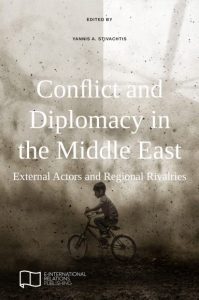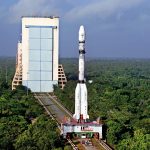
The book “Conflict and Diplomacy in the Middle East: External Actors and Regional Rivalries” is by Dr Yannis Stivachtis. It is a policy brief that discusses in-depth the international relations in the Middle East Region.
The author, Yannis A. Stivachtis, is a professor of Political Science and the Jean Monnet Chair at Virginia Polytechnic Institute and State University. He is also the Associate Department Chair, Director of the International Studies Program, and university coordinator for the Diplomacy Lab program. He was recently awarded the Jean Monnet Chair in recognition of excellence in European Union Studies by the European Commission — Education, Audio-visual and Cultural Executive Agency (EACEA).
The Middle East region that we know as what it is today began after World War 1, with the fall of the Ottoman empire by the Western powers. The region was then consequently separated into several states. The most significant regional dynamic was the creation of Israel after World War 2. The fall of the Soviet Union in the 1990s resulted in Jews migrating to Israel, furthering its strength. The subsequent wars and conflicts in the region added to the already existing regional complexity. They led to the development of contemporary Middle East politics. The book discusses these details by delineating the politics prevailing in the region and how it impacts the world.
The book begins with the author, Dr Yannis Stivachtis, using the definition of Regional Security Complex Theory (RSCT). The theory was developed by Barry Buzan and further evolved Ole Wæver. It uses the theory of ‘Balance of Power’ to recognise the region of the Middle East. He mentions that the Middle East region holds extremely significant importance in international politics despite numerous wars and conflicts due to its geography and strategic uniqueness. The largest oil reserves with three significant religions – Islam, Judaism and Christianity originated in this region. Consequently, it has resulted in it becoming a ground for “Great Political Games” for centuries. So, to have an extensive analysis of the politics prevailing in the region, the book is divided into nine chapters.
In the first chapter– Globalism, Regionalism and the Middle East, the author has centred the argument around the concept of globalism and regionalism in the Middle East region. On the one hand, globalisation refers to economic and political liberalism. In contrast, regionalism refers to cooperation on economics, politics and security in a geographically defined area. The author argues that the Middle East has been prosperous in censuring global trends and regional cooperation. It is persistent with the lack of conflict resolution capabilities of all the formal institutions created in the region. Several existing commonalities among the nation-state lie in ensuring the continuation of the traditional form of government rather than the cooperation for conflict resolution and prosperity through economic reforms and political liberalisation. The author finally points out that the crises in the Middle East region can become a global concern, thereby blurring the lines of regional and global issues of concern.
In the second chapter– The Challenges to Middle Eastern International Society: A study in Disorder, the author analyses the concept of ‘order’ in Middle East regional politics. By using the English School approach, the author tries to unfold the layers that are traversing the state of affairs that describes the present scenario of the region. The region has centuries-old historical, political and cultural ties. Nevertheless, there are constant intra-state and inter-state encounters that include illegal and violent non-state actors. There is a lack of vision and leadership among the states for the region’s future. The lack of a broken public system overburdened by the constant interference of external powers in the region further deteriorates the situation. These have led to the rise of violent groups, illegitimate economies and hostilities created by certain groups to further their agenda. The author finally concludes that several aids and assistance by the international society has only reduced the collateral damage caused by the instability and the inter conflicting Middle East society.
In the third chapter – United States Foreign Policy in the Middle East after the Cold War, the author Syrian begins with the Persian War when Saddam Hussein of Iraq invaded Kuwait for its oil resources and the subsequent USA involvement in the region. The chapter is divided into several sections – the Persian War, the Israeli-Palestinian peace process, Osama bin Laden and al-Qaeda, the Iraq War, the Iran nuclear program, Arab Spring, Syrian Civil War, The Islamic state and the final section being the comparison of the Middle East Policy of the USA in the Trump and Obama era.
There has been USA involvement in the region for over three decades, with most of that duration being engaged in the Middle East conflicts. During the initial days of involvement, the USA had extensive support from the public that wore off with time. There are several internal conflicts among the region’s states that have been prevalent for decades. However, despite immense involvement, the USA leadership has failed to acknowledge and reduce the intensity of the countless problems.
The fourth chapter – Russia Foreign Policy in the Middle East under Putin: Can Bears Walk in the Desert? discusses the Russian policies in the Middle East. Since the early 18th century, the Soviet Union recognised the importance of the Middle East due to its geostrategic location. It was thus the ground for its soft power expansion. Due to the Orthodox Church doctrinal in the country, the Soviet Union always considered it leverage to navigate the region where three great religions originated. However, the Soviet Union always hesitated to interfere in the internal affairs and unsettle the existing status quo as its priorities were the Balkans and Central European. Nevertheless, all these changed with Putin’s policy makeover about the Middle East that is more evolved and aggressive. Russia now does not hesitate to be a key player in the region’s politics. It is only going to further involvement in future.
The fifth chapter – China in the Post-Hegemonic Middle East: A Wary Dragon? begins with the historical relations of China with the Middle East countries. Although there were several engagements, the relations could never be built steadily. However, there has been substantial evolution in the Chinese policy towards the Middle East post-Xi Jinping. The most significant progress in the relations was in 2013 when ‘One Belt, One Road (OBOR)’ was launched in the region. It was then followed by some diplomatic measures in 2016, including the visit by Xi Jinping Middle East countries. There is an increased involvement in the region to fill the power vacuum caused by the USA withdrawal. However, the Chinese policy is yet to emerge fully. So far, there has only been the expansion of OBOR for its economic interests and a lack of involvement in political and security matters of concern. Thus, if China wants to become a regional player asserting dominance in the region, it would have to play a more substantial role in the profoundly entangled conflicts.
The sixth chapter – The EU and the Middle East: From the Euro-Mediterranean Partnership to the Union for the Mediterranean, discusses the EU-Middle East relations within the Euro-Mediterranean Partnership (EMP) framework to the Union for the Mediterranean (UfM). The relations between EU-Middle East dates back to colonial history. The relations were only formalised in the 1990s due to the region’s rising political and security instability that affected the EU. The fall of the Soviet Union diverted the EU focus to the Middle East region. Since then, there have been several state-level cooperation in the economic, political and security sectors despite only providing decent results. However, all these efforts fail to provide adequate results. Abbott finally concludes that the EU best interests lie in peace and stability prevailing in the MENA.
The seventh chapter– The EU and the Middle East: The European Neighbourhood Policy (ENP), gives an overview of the European Neighbourhood Policy (ENP) framework and the EU and the Middle East within that framework. The chapter is divided into four sections. The first section is the journey from the Euro-Mediterranean Partnership (EMP) to the adoption of ENP in 2004. The second part elaborates on the ENP framework. Further, it explores its shortcomings in the “Partnership for Democracy and Shared Prosperity” in 2011. The last section discusses the 2011 review and its shortcomings that eventually led to the review of 2015. The chapter finally discusses the age-old problem of the European society – civiliser-civilised attitude towards other nations. Stivachtis argues that the EU needs to ensure that the concerns and opinions of the MENA countries are also considered.
In the eighth chapter – The United Nations and Middle Eastern Security, Allison Miller discusses the role of the United Nations in the Middle East region. The chapter discusses the crisis in Lebanon, Gaza and Israel, Iraq and ISIS, the Syrian Civil war and the refugee crisis, with finally discussing the conflict in Yemen. The author describes the role of the UN in the complex inter-conflicting region through peacekeeping forces. The UN also recognises the need to assist the civilians and other stakeholders affected by the continuous conflicts. Thus, there has been an increased influx in humanitarian aid, economic aid, and many others. Despite the UN role, it is essential for cooperation among all the stakeholders to ensure stability and peace in the region. The UN must continue its work to ensure the development of the society of the Middle East.
In the final chapter – Hegemonic Aspirations and the Middle East Discord: The Case of Iran, the author deploys the theory of ‘hegemony’ to analyse the countries of the Middle East, including Saudi Arabia, Iran, Turkey, and Israel. However, the author argues that Iran can become a regional hegemony. Protecting Rights of the Shias, the nuclear program agreement and its military role in Lebanon, Syria, Iraq and Yemen are significant aspects that show that the country can be a regional leader with solid external alliances. The book provides a beautiful insight into the conflicts in the Middle East in the region. It further discusses the approaches of various stakeholders in the region. It is a must-read for a Middle-East international politics enthusiast.













